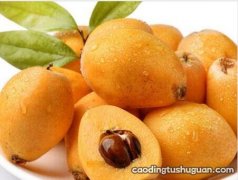比较级的用法和句型 比较级的变化规则

1、比较级用法:
表示比…更,用比较级形容词+than+比较成分,than后主词的述语动词往往省略,非正式用法的than后的人称代名词可用受格 。
表示较…低; 不及…用less+原级形容词+than+比较成分 。
表示两者之中较…,用the+比较级+of the two 。
定冠词或指示形容词+比较级+名词表示比较 。
有少数以ior结尾的形容词,如inferior(次于),junior(年幼的;下级的),posterior(之后),prior(之前),senior(年长的,上级的),superior(优于)等本身就有比较的意思 , 常与介系词to连用 。
比较形容词可以被副词如a little(一点),much(得多),even(更加) , still(更加),far(…的多)等修饰,但不可用very修饰 。
2、比较级的句型:
同级比较:
由“...as + 形容词原型 + as...”或“...as + 形容词 + 名词 + as...”构成 。My grandpa is as energetic as a young man.Exercise is as useful a way as any other to lose unwanted weight.I try to find as much information as I can about what happened.
由“...not so (as) + 形容词或副词原型 + as...”或“...not so (as) + 形容词 + 名词 + as...”构成 。Luckily, the weather is not so wet as it is today.
降级比较:
由“……形容词比较级+ than...”构成 。He is more concerned about others than about himself.
【比较级的用法和句型 比较级的变化规则】由“...many / much more + 可数 / 不可数名词 + than...”My friend earned much more money than I did last year.
推荐阅读
- 宁夏外地住院看病刷医保的流程是什么?
- 葡萄和提子的营养区别 提子和葡萄的营养成分一样吗
- 得地的用法口诀 的地得的用法区别口诀四
- 端午节的手抄报简单内容50字 端午节的手抄报简单内容
- 柳州退休人员去世后剩下的养老金怎么办
- 枸杞红枣泡酒的副作用与注意事项 枸杞红枣泡酒的副作用与注意事项有哪些
- 桑葚如何吃? 桑葚如何吃
- 天官赐福动画的主题曲 天官赐福动画新片尾曲是什么歌
- {剑灵}摩天楼攻略 剑灵魔天楼攻略
- 《大江大河2》小拉是什么意思是谁 大江大河二里面的小拉是谁













